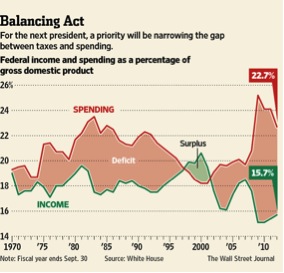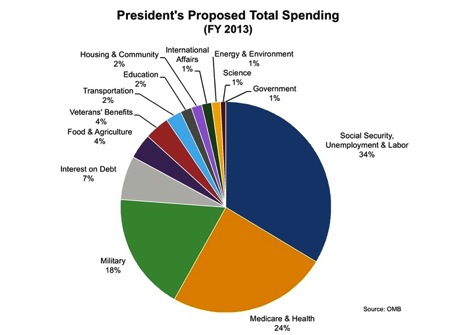Aging & the Post Election Medicare Debate
In my post just before the election I covered some ideas about what was missing and also some of the inconsistencies in the politics of health care. I also described some of the main factors driving the rise in health care spending including an aging population.
In the next few months both parties will face the so called “Fiscal Cliff” which consists of the expiration of the Bush era tax cuts (e.g. tax increases) and automatic spending cuts that were put in place in 2011. At some level this represents mutual political blackmail by both parties. The thinking goes that the Republicans don’t want the tax increases or cuts in defense spending and the Democrats don’t want cuts in other programs. Thus both parties might actually be incented to reach some sort of compromise and put the long term fiscal health of the country on the right track reminiscent of what Ronald Reagan and Tip O’Neill in the 1980s when they fixed Social Security. If a compromise does emerge, changes in Medicare and Social Security are going to be big topics of the discussion and solution.
I want to show two graphics that I hope will help everyone understand the magnitude of the problem and inform their own thinking about it.
First, both taxes and spending are part of the problem. The figure below is from an excellent pre-election Wall Street Journal article on trends in taxes and spending. It shows that the big yearly deficits recently being run in the U.S. are due to a combination of low taxes and high spending by recent standards.
Second, here is a figure of where the Feds spend money as exemplified by the proposed budget for 2013 (it has not been passed yet). The total is just under $3.7 trillion. What is interesting is that a total of 62% is “mandatory” spending on things like Social Security and Medicare. Another 18% or about $65O billion is for the military, and interest on the debt is 7%. With current policies in place the deficit is expected to be about $1 trillion. So even if you cut everything else (Ag programs, medical research, education etc.) to zero you would still have to raise taxes by about $500 billion per year to balance the budget and pay for mandatory programs, the military and interest on the debt. The other long term issue is that most of the mandatory spending is tied to Social Security and Medicare that are for people over 65. Thus these programs are set to grow automatically as the baby boom generation ages and there are more people over 65.
The next link is to a budget calculator game from 2010 that lets you figure out what combination of spending cuts and changes in tax policy you would consider to address the long term budget issues facing the country. I would encourage everyone to play the budget game, we all need to educate ourselves about these issues and understand the choices we face. The goal of the graphics above and the budget game is to give readers the resources to learn more. The simple math I have outlined suggests that changes in Social Security and Medicare spending are coming. More on this in upcoming posts.
This entry was posted on Thursday, November 8th, 2012 at 6:02 am and is filed under Current Events, Health Policy. You can follow any responses to this entry through the RSS 2.0 feed. You can leave a response, or trackback from your own site.




November 15th, 2012 at 6:15 am
Aging: Just the Facts | Human Limits: Michael J. Joyner, M.D. says:[…] A couple of posts ago I showed you a pie chart of what the US Federal Government spends money on and more than 50% of the total goes to Social Security and Medicare — people who are mostly over 65. This means that our aging population is driving much of the pressure on the budget and will be central to the debate about spending and taxes that continues now that the election is over. That having been said, I think it is essential for us all to have some appreciation of why aging is going to be such a big challenge. The chart below comes from something on the history of Social Security and shows how many people made it to 65 and how long they lived on average after they made it to 65. It starts in 1940 and ends in 1990. […]
December 3rd, 2012 at 6:14 am
Elite Octogenarians! | Human Limits: Michael J. Joyner, M.D. says:[…] number of recent posts have focused on what might be called the “geopolitics” of healthcare and the Federal budget in the United States and offered analysis and ideas about how things like sin taxes and insurance […]
January 3rd, 2013 at 6:02 am
Longevity and the Retirement Age | Human Limits: Michael J. Joyner, M.D. says:[…] of the long term pressure on the finances of the Federal Government is being driven by rising expenditures on health care and pensions and much of this is being driven in turn by an aging population. This has led to proposals to […]